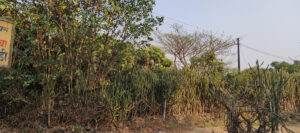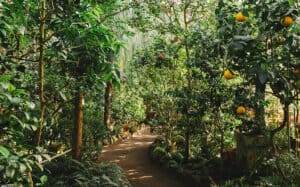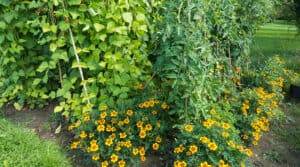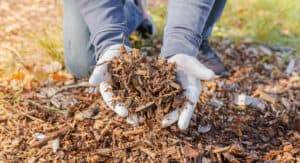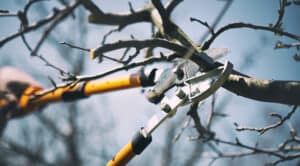This work was graciously provided by Aleksandar Stevanovic as a summarized version of his book: Permaculture & Ideal Microclimate, available for purchase on Amazon.com.
What is a microclimate?
A microclimate is the climate of an area that is different from the surrounding climate. Microclimates can occur on a meadow, field, hillside, plain, lake, the edge of a forest, a city district, a small settlement, and so on.
Factors that Influence Microclimates
A microclimate is a subset of a macroclimate that develops as a result of a microrelief (slight changes in elevation such as a basin, river valley, hill, sunny and shaded sides, etc.), physical characteristics of a substrate (type of plant cover, bare ground or covered with water, snow, etc.), and human activity.
Slopes
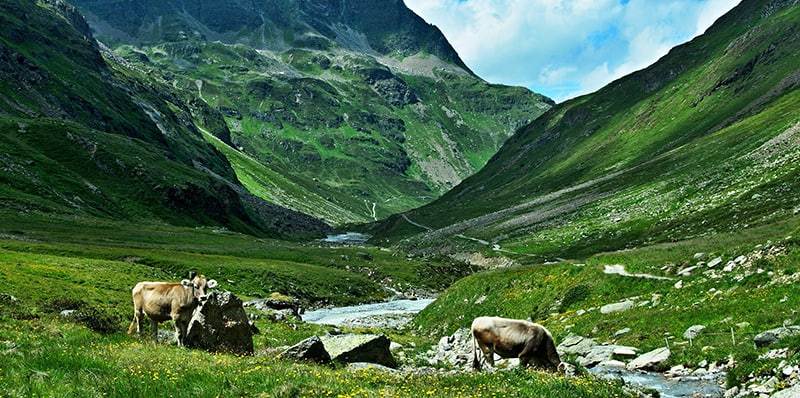
Elevations reduce the range of daily temperature fluctuations, whereas recesses increase it.
There are also differences in air temperature on a slope as a result of either sides’ exposure to the sun. The sides that face the sun are always warmer than those that face the shade. Valleys that are stretched out along parallels (north to south) are better illuminated than valleys that are stretched out along meridians (east to west).
Plants
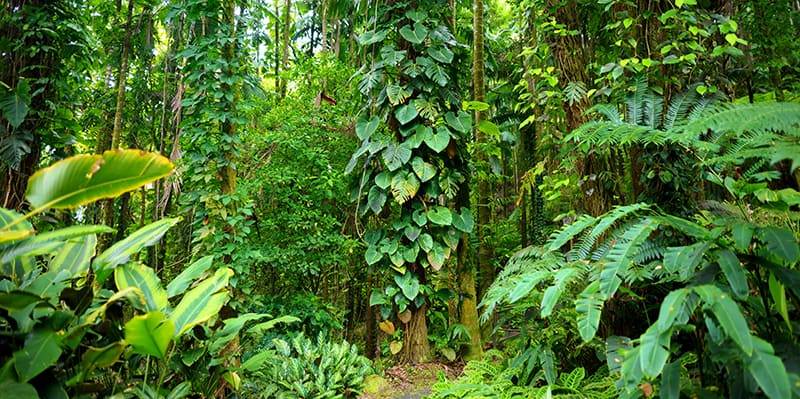
Vegetation also has a significant impact on a microclimate. It reduces brightness, lowers daily and annual temperature amplitudes, increases relative humidity and precipitation, retains snow, and reduces wind velocity.
Bodies of Water
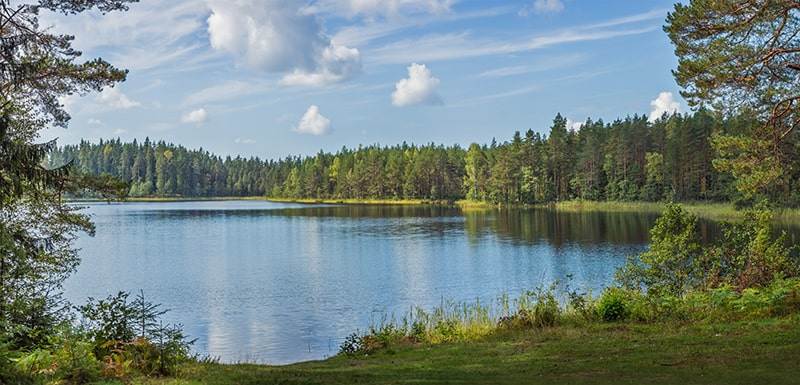
In their coastal belt, lakes also make an impact on the climate. It feels cool when we approach them in the summer and less cold when we approach them in the winter. The larger the lake, the greater the impact.
People

Human activity has an impact on the climate as well. He has an impact on the environment by constructing objects out of concrete, bricks, and asphalt.
What is an ideal microclimate?
The ideal microclimate should be warmer than the surrounding environment in order to extend the growing season and range of perennial plant species you can grow at your location. But a warm microclimate is ideal only in a cold or temperate zone. For areas in the tropics that already exist within a warm climate, searching for a warmer microclimate is not necessary.
Creating an ideal microclimate not only improves plant cultivation, yield, and quality (by extending the growing season) but also reduces energy consumption to provide more comfortable conditions within your home or other buildings in that location.
Location selection
If we do not have a favorable microclimate at our property and want to take advantage of the benefits it provides, there are a few methods we can use to improve it.
However, if we want to take advantage of the benefits of an IDEAL MICROCLIMATE, choosing the right location is critical – in other words, a location with certain features that can not be easily replicated through human effort such as a lake or slope should be chosen as the foundation that further human activities will only help to advance.
Effect of Slopes on microclimate
Slope position
As mentioned in the introduction, a slope’s position can have a significant impact on the microclimate. North-facing hillsides are much colder and wetter than south-facing hillsides (in the northern hemisphere), and these delay spring phenology. This is because south-facing hillsides receive more direct sunlight throughout the day, whereas north-facing hillsides are mostly in the shade or receive only a small amount of sunlight, depending on the gradient and season.
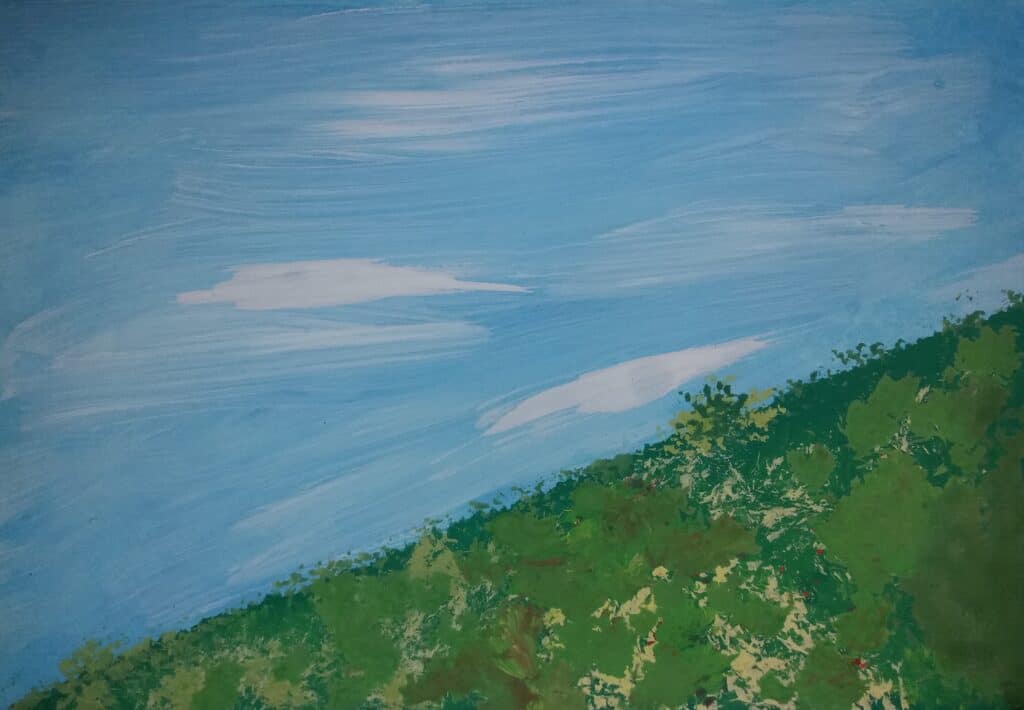
Wind exposure is another factor that contributes to a significant difference in the microclimate of south-facing and north-facing slopes. In terms of slope, a 20 to 30-degree angle is probably the best.
It is amazing that steep south-facing slopes (and north-facing slopes in the southern hemisphere) can absorb solar energy at the same pace in both sunny winter days and in summer, or at an even faster pace during sunny winter days.
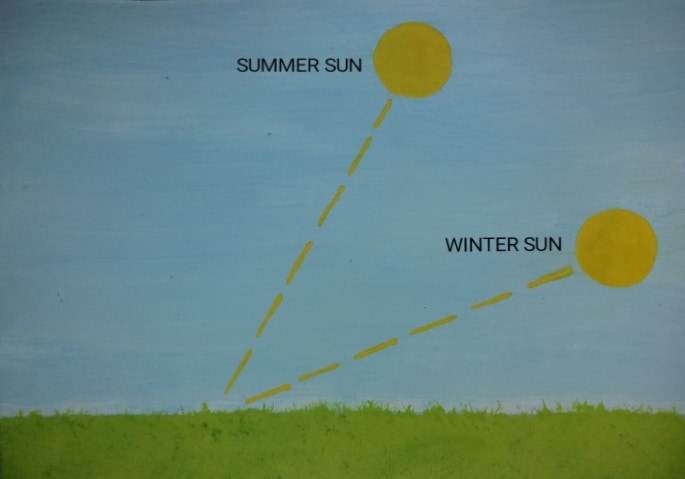
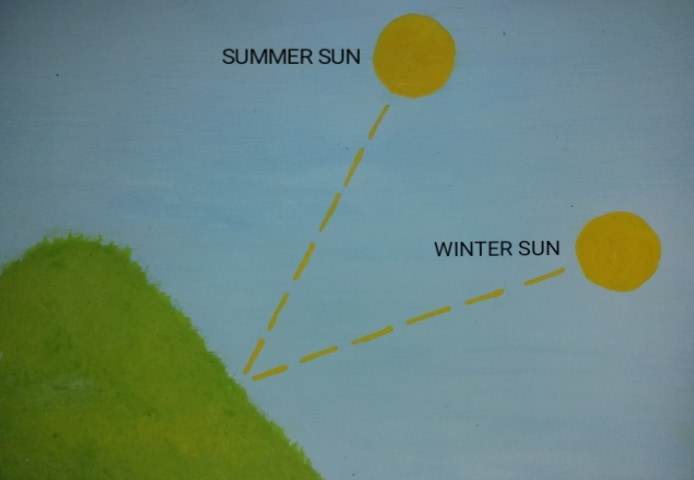
Every 5 degrees a slope tilts toward the sun, moves that ground one climate region southward. Although this effect may sound drastic, there have been many times when I’ve observed southern sunny slopes that are snow-free and dry while the ground below them is covered with snow. Another advantage of sunny slopes over valleys and basins is that valleys and basins are prone to fog formation during the cold season.
These characteristics of south-facing slopes make them ideal for growing a variety of plants (such as grapevines) that require a lot of heat and suffer from low temperatures. It is also possible to significantly reduce energy consumption if a house is built in such a location.
The disadvantage of south-facing slopes, which are the warmest in comparison to other slopes, is that they have lower humidity because evaporation is most pronounced due to the increased heat.
Planting trees can greatly reduce soil erosion, improve soil quality and increase humidity on south-facing slopes.
Deciduous trees planted in the direction of the Sun can block Sun rays during the summer and thus prevent excessive heating, and during the cold season, Sun rays can provide required heat to selected locations.
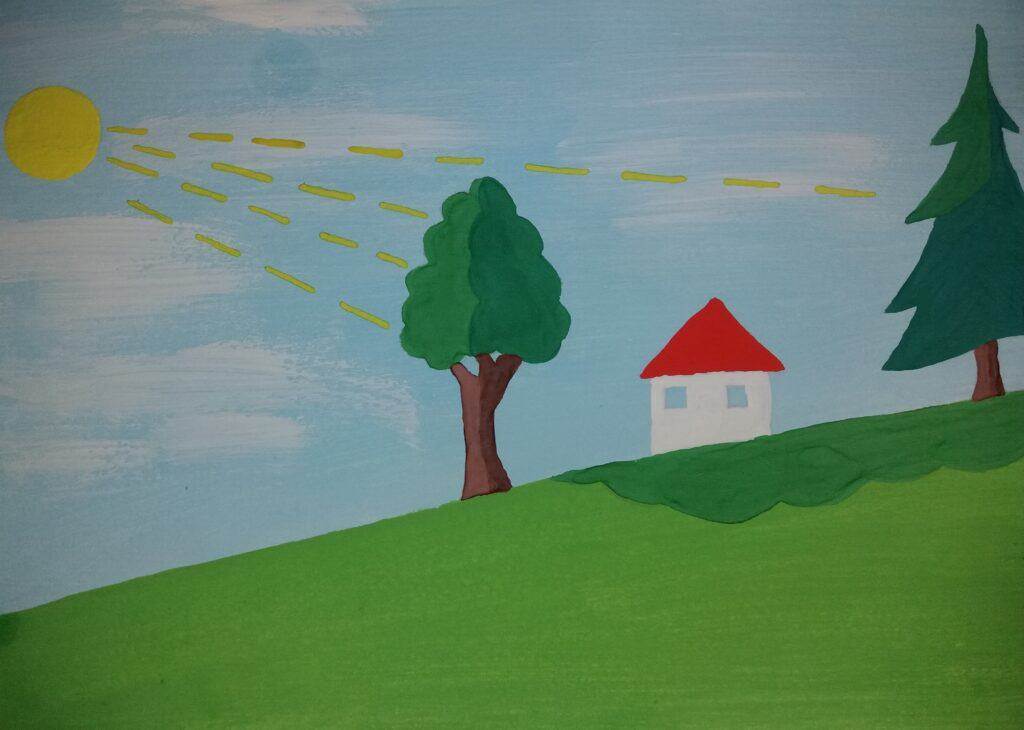

Thermal belts
A thermal belt is a zone characterized by milder frosts that form on the slopes between the mountain’s top and bottom.
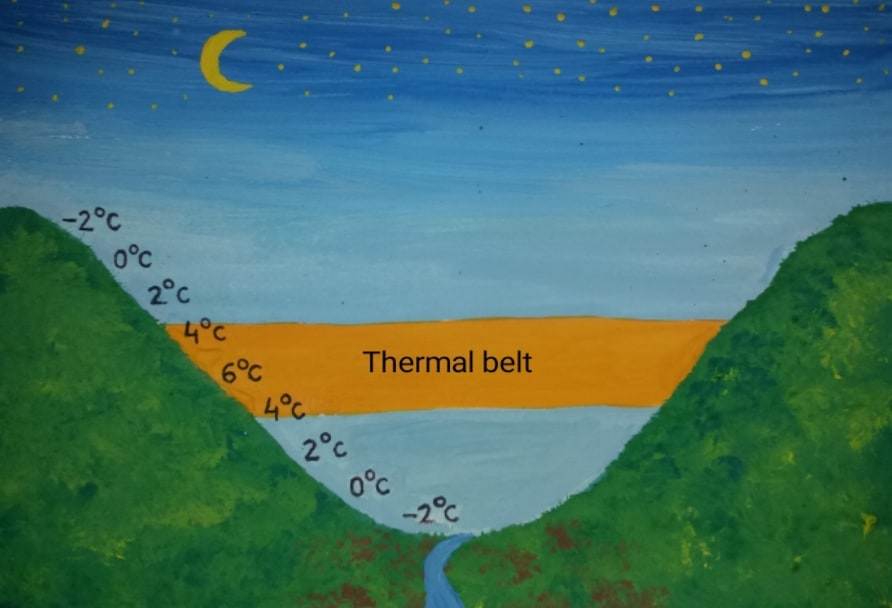
On clear nights with no wind, cold air from the mountain tops drains down the hill to lower points, where it pools in valleys and pits like water.

This occurs when soil releases heat from the Sun during the day. This air then travels a little higher up in the atmosphere, causing cooling air to migrate toward the ground. As the cold low air which is heavier than warm air, slips toward the valley, the higher warmer air constantly replaces it, a process that continues until dawn.
As a result, the air temperature near the ground remains relatively similar to that above it throughout the night. This explains why the temperature at the bottom of a mountain drops suddenly when it is clear and the sun begins to set. The heat emitted at the bottom of a mountain rises to higher ground, toward a thermal belt between the valley and the mountain’s summit.
The cold air drainage phenomenon caused by gravity is sometimes visible in the valleys and basins as fog.
Obstacles such as dense vegetation, as well as the structures that can be found on the road down the slope, can cause a formation of a frost pocket above that obstacle, disrupting cold air drainage.


This is why it is necessary to remove shrubbery and other similar obstacles to allow cold air to descend smoothly to lower levels.
When there is wind on clear nights, the formation of a thermal belt is disabled, but if the wind speed is less than 5 m/s, a temperature inversion can still be relatively stable.
When the weather is cloudy, temperature inversions and thermal belts do not occur, either.
Depending on the situation, the air temperature in the warmest part of a thermal belt can be 10 or more degrees higher than the temperature at the bottom and top of a mountain. As a result, plants in this zone bloom earlier in the spring, and grapevines, which are susceptible to frost, are most commonly cultivated precisely on these parts of a mountain or hill.
Effect of soil on microclimate
A soil’s influence on the microclimate can be significant. Sandy, loose, and dry soil is prone to very rapid heating and maximum temperature increase but also to rapid cooling and minimum temperature decrease.
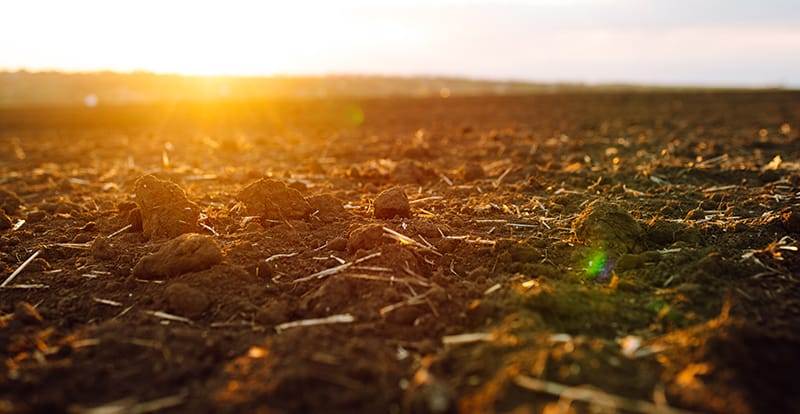
Light soil reflects more heat than dark soil, which absorbs more heat. If the soil absorbs and retains moisture more effectively (like clay soil), this results in higher air humidity due to evaporation and thus higher air temperature due to humidity capturing the heat from the Sun.
Effect of vegetation on microclimate
Water evaporation from the ground can be slowed by vegetation that covers the soil. The presence of plants means that there is more humidity in the air that they emit.
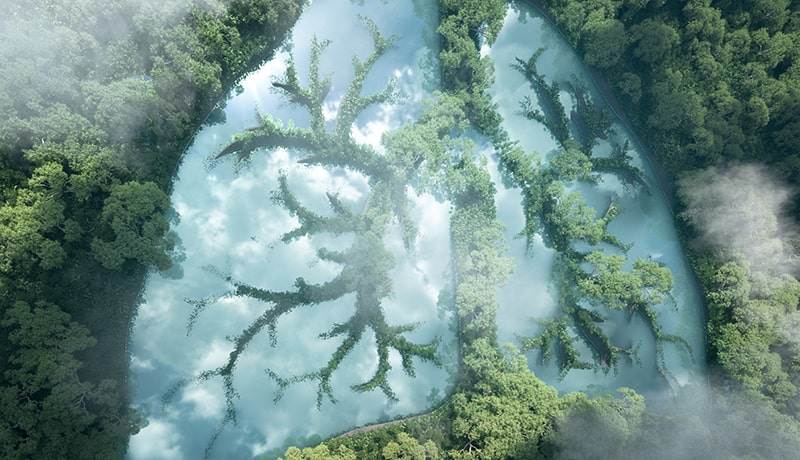
By covering the soil, vegetation also prevents higher temperature oscillations and a rapid loss of heat from the soil, both of which are more intense in bare areas without vegetation.
If trees are planted in such a way that they provide wind protection to an area, it allows the daily heat generated by the Sun to be stored inside that protected space during the night, contributes to higher soil and air humidity, and prevents erosion caused by wind, water, and evaporation.
Effect of thermal mass on microclimate
Thermal mass refers to the ability of any object to absorb, retain, and radiate heat over time to influence the microclimate of nearby areas.
The amount of mass present will influence the magnitude of how much heat can be captured. For example, a lake will have more impact than a pond. Aside from size, certain materials also vary in their degree of effectiveness as a thermal mass source. A home made out of concrete or bricks will store more thermal energy than one made out of wood.
The proximity of your thermal mass source to your plants and home will also affect how effective it is. The closer a thermal mass source is to the area you’d like to influence, the more dramatic of an impact it will have. Typically the most common source of thermal energy is the sun, but heat may also originate from a fire, volcano, hot springs, and other sources.
Water
The most powerful tool for regulating climate is water. It functions as thermal mass, holding onto heat absorbed from the sun during the day and releasing it when the ambient air temperature drops. The heat released by the water makes the environment warmer and more humid than places that are far from that water surface, positively affecting plant growth, development, and yield.

It is well known that bigger bodies of water, such as oceans, rivers, and lakes, affect the climate of neighboring land masses, but ponds can likewise affect the temperature of the neighborhood garden. The volume of water in a pond determines how much of an effect it can have on the environment.
However, even the smallest pond will have an impact on the local microclimate and can be quite important for the survival or development of nearby plants.
Additionally, light reflects off the water’s surface. You can take advantage of this by strategically cultivating heat-loving plants close to the water body. Ponds that are strategically positioned close to homes can increase solar radiation because of reflection, warming the home.
Pond microclimates can assist the garden in becoming warmer, but they can also cool an area during the hottest times of the growing season. Air circulation over the pond can assist in cooling locations close to the water’s surface and supply desperately needed dampness in particularly dry or desert locations.
Water as a thermal mass can also be used for free additional greenhouse heating. The only equipment required for this heating technique is a set of plastic containers, which should be arranged around the plants in the greenhouse before being filled with water.
Stones
Although stones do not have the same environmental impact as water, their heat radiation is not insignificant. Stones absorb heat from the Sun during the day and then release it at night, warming the environment around them by a few degrees.

Because concrete, bricks, gravel, sand, and other materials have similar properties, the concrete structures that we build can act as a thermal mass and influence the modification of the microclimate. Plants planted near large stones or walls on the sunny side grow and mature faster, and their growing season begins earlier in spring and ends later in autumn than plants not subject to this effect. Exotic species have a better chance of surviving a continental winter if planted near a south-facing wall.
Windbreaks (shelterbelt)
A windbreak is a green belt composed of one or more rows of trees and/or shrubs, deciduous trees, and/or conifers, whose purpose is to reduce wind velocity without causing turbulence and to prevent soil erosion. It is planted on the side from which the strongest winds come.

A windbreak protects a leeward side for 5 to 10 times its height. Wind velocity of 8 km/h is reduced to 2 km/h with the help of the windbreak, and wind speed of 50 km/h is reduced to 25 km/h.
The Ideal Density of your Windbreak
Because the wind cannot be completely blocked, semi-porous windbreaks are used to reduce wind speed. It has been empirically established that porosity of 50% is optimal. If too thin a row of trees is utilized, winds will easily pass through to affect protected areas.

Turbulences can be generated by a densely planted windbreak (usually made of several rows of densely planted trees dominated by conifers), causing them to pass over its top and descend into a protected zone. As a result, the windbreak’s benefit would be null and void. Instead, our goal should be to direct wind towards an upward direction to protect our plants at ground level on the inside of the windbreak.
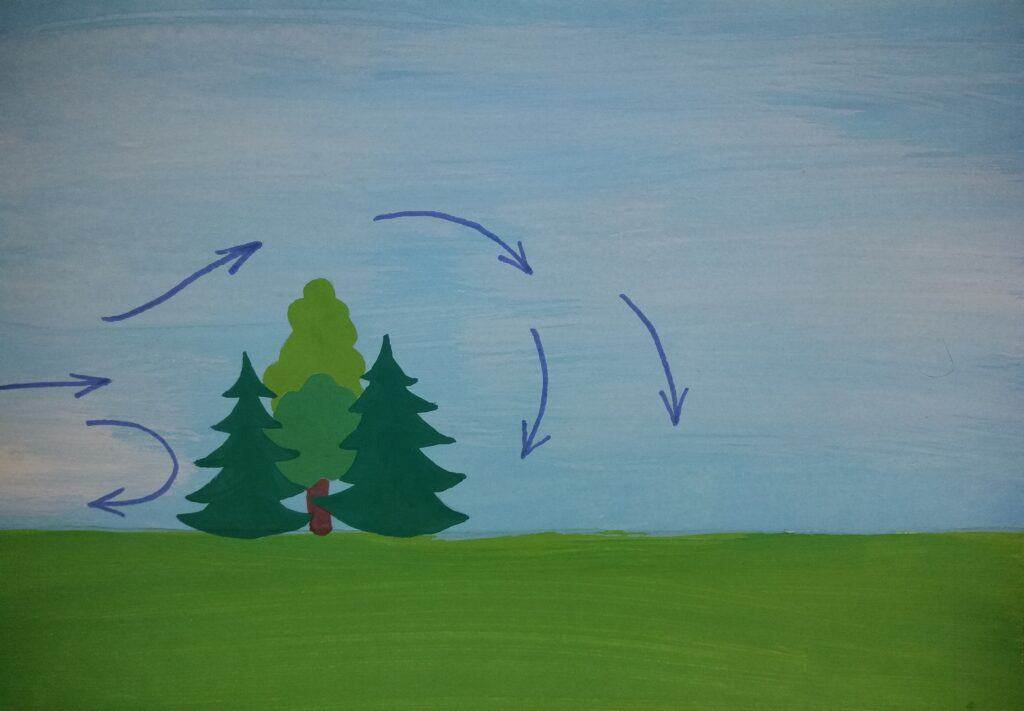
The windbreaks made of several rows of trees are usually composed of a combination of deciduous and evergreen trees, as well as shrubs. When planting, it is necessary to leave a certain distance between the trees, and in the case of the windbreak with one or two rows of trees, it is recommended to plant more densely, with a minimum amount of distance between the trees in order to achieve the required density.
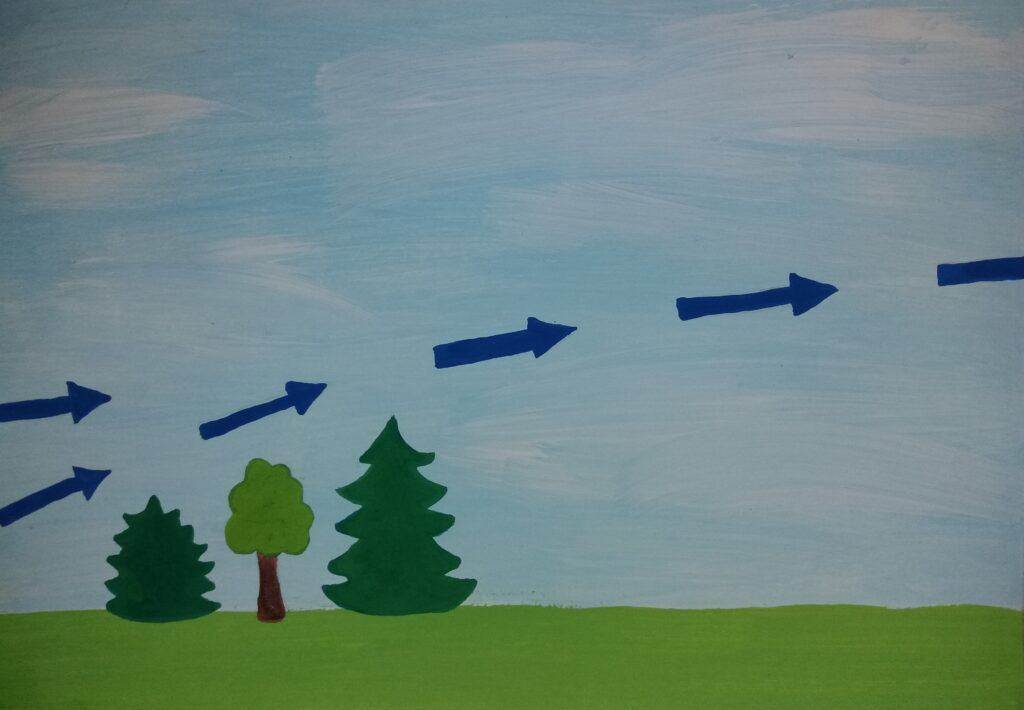
The Shape of Your Windbreak Hedgerows
Windbreaks with more than one leg are preferable, thus, a two-leg windbreak (in the shape of the letter L) protects more effectively than a single-leg windbreak because wind penetration is prevented from the two windiest sides.
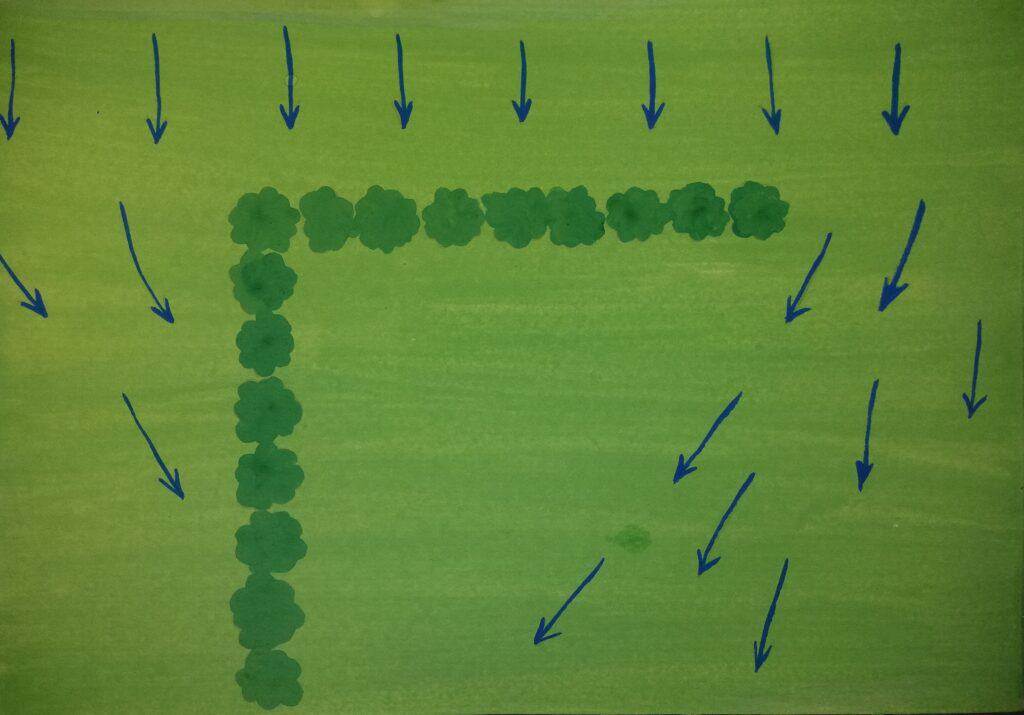
A windbreak planted on a slope above the protected area, in addition to protecting from winds, prevents cold air from descending from higher places during clear nights, reinforcing the effect of the thermal belt.
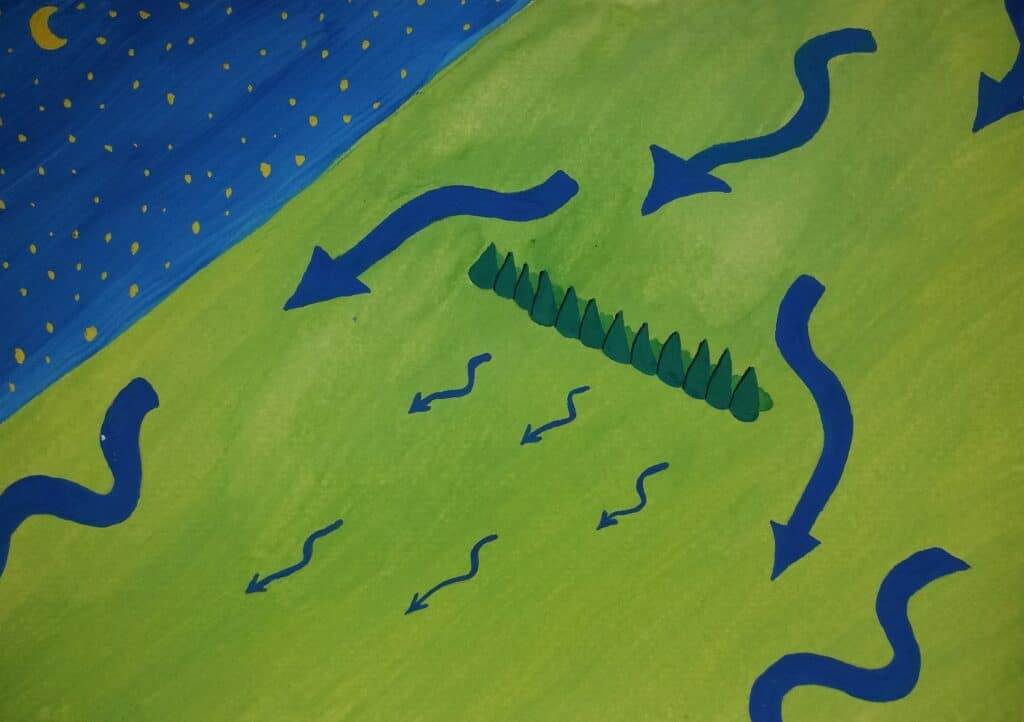
The so-called suntrap is a U-shaped windbreak that can serve three functions. Except for the fact that it protects from winds on three sides, its openness to the south (in the southern hemisphere, to the north) results in the protected location accumulating heat from the entire day when the weather is not cloudy and allowing warm winds to come from the warmer south side.
Maximum wind protection from the north, east, and west winds contribute to significantly slower heat loss within the protected area, which is generated by heating the soil and reflecting heat from an inner part of the windbreak. A form like this also aids in the direction of cold air that comes from higher parts of the slope during cold air drainage away from the protected property.
The impact of windbreaks on microclimate
Windbreak hedgerows may be used as a barrier against cold air which descends from higher elevations of a slope. The impact of the windbreak on microclimate depends on its density, height, length, orientation, as well as part of a day.
During the night, the temperature inside the windbreak is slightly higher than the temperature in the open (outside the windbreak), and this is especially true of the ground-level temperature reading. But, if the area is not well-drained, the temperature may be several degrees lower during clear and calm nights.
A higher soil temperature in a protected zone can allow for earlier planting and germination, extending the growing season in areas with cold and moderate climates and short growing seasons.
Because a lack of wind reduces water evaporation, soil moisture and air humidity are always higher than outside the protected zone, depending on windbreak density. Soil erosion can be reduced almost completely up to a distance of 10 times the height of the windbreak, which is perhaps the most obvious result of windbreak use.

Windbreaks boost biodiversity by creating favorable conditions for flora and fauna. It is also important as a bird refuge during annual migrations. And if we talk about the household, a lot of energy can be saved on the protected side of the windbreak due to reducing the influence of cold winds, so, a good windbreak can result in the achievement of 25% or even up to 40% in thermal energy savings.
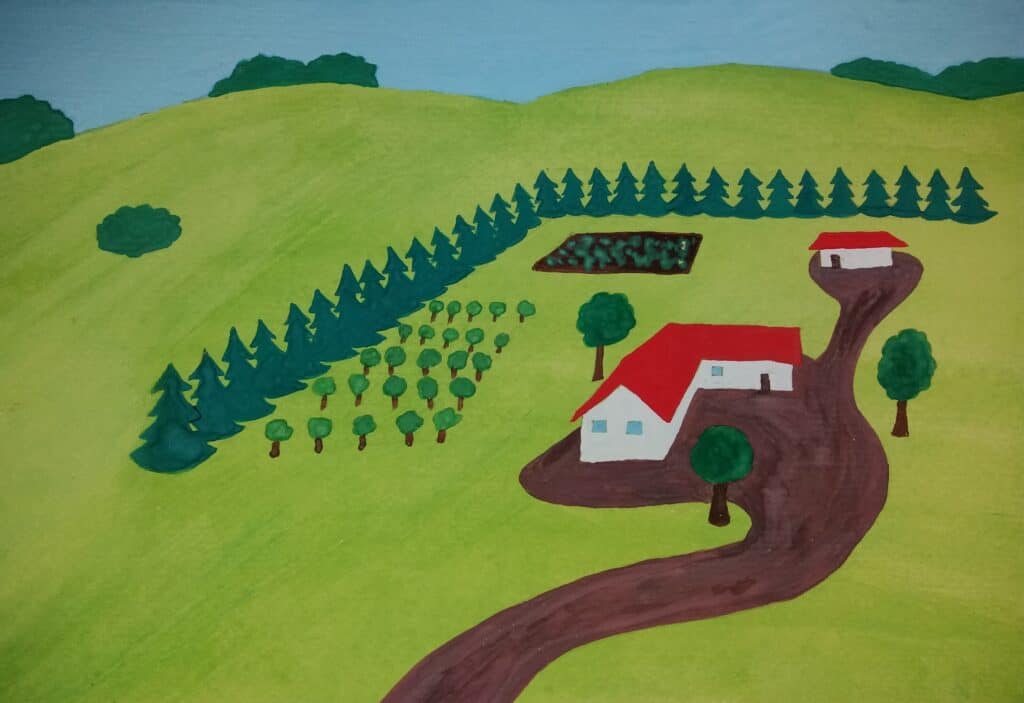
Tree Species for Windbreaks
Because of their wind resistance and ease of maintenance, alders are successfully used as windbreaks in many parts of Europe. White willow is also useful for windbreaks, but it has less self-sowing than alders. Conifers are ideal for windbreaks because they provide protection all year.
Suitable species include Leyland cypress, Thuja „Green Giant“, black pine, Sitka spruce, and others. Density can sometimes cause turbulences, so it is necessary to thin out the dense crowns. Combinations of fast-growing and slow-growing species are also beneficial because they provide long-term protection. A fast-growing species, grey alder, protects until the spruce matures.
Conclusion
The result of creating an ideal microclimate is typically a combination of many factors.
After we have identified all of the factors that influence the microclimate, we will attempt to predict the outcome of their effect in one location.
Summary of Factors That Influence Microclimates
Sunny slopes, thermal mass, soil type and suntraps are all related to the utilization of solar energy.
A windbreak primarily refers to the neutralization of wind cooling, though heat retained by it is certainly a result of solar influence.
A thermal belt can also refer to solar energy, but it is most commonly used to avoid the cold night air.
Vegetation prevents the loss of heat from the Sun by humidifying, isolating the soil, and, as previously mentioned, reducing winds.
All of these factors enhance the effects of one another and compensate for each other in case the effect of one or the other is weakened.
Microclimate Examples: A Collaboration of Factors
If it is cloudy, there will be no benefit from a slope facing the Sun and no accumulated heat, nor will there be cold air drainage at night, but a windbreak will keep the place a little warmer than the environment, especially if it is very windy.
Also, if there is no wind and it is sunny, a windbreak will not play a significant role, but the location’s proclivity to better utilize the sun’s heat will make it warmer than its surroundings. The thermal bell’s effect will then keep a spot warm during the night.
We cannot expect a magical experience from our chosen and protected location, nor can we expect a Mediterranean microclimate in the middle of a continental climatic zone, but the microclimate of our location will be significantly better than that of the surrounding area.
In the cold season, a night without clouds and wind, or a gentle wind, will result in cold air drainage toward the basin. This means that the thermal belt will form in our location, and the morning temperature will be much higher within our location’s microclimate than in the basin, owing primarily to the thermal belt effect, as well as additional effects such as thermal mass and protection from the cold air that descends from higher elevations.

A new sunny day will begin to raise the temperature, but the warming of the soil on a slope will begin earlier and last longer than warming in a sheltered valley. In addition, the more right angle under which the Sun’s rays fall, the thermal mass, as well as significantly higher morning temperature will contribute to a big difference in the maximum daily temperature of our location and the basin.

This difference can be even greater if the sunny day is accompanied by a cold wind, thus, a protected area will reach a high maximum temperature, whereas a basin will be much colder, despite the sunny weather.
It is usually warmer in lower elevations than in higher elevations due to the ground absorbing heat throughout the day. One example is when the air temperature drops close to zero and rain continues to fall in a basin while snow falls on the slopes and mountaintops.
However, this does not mean that this difference in temperature is significant, and this advantage of the basin is not that great when compared to the advantage the slope has during temperature inversion. The air temperature decreases by an average of 0.65 degrees for every 100 m above sea level, but in the case of rain, snow or increased humidity, the rate of decrease is even lower.
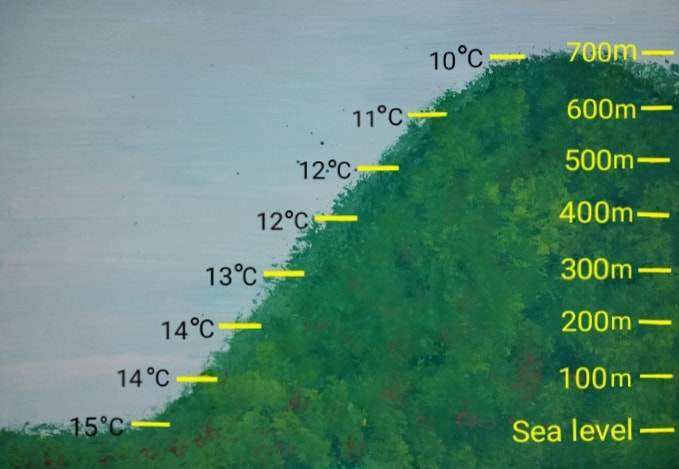
The maximum temperatures are higher in lower places than in higher places, especially in summer, but as previously stated, during the cold season, the sunny slopes can often be warmer than the basins.
We can conclude that the result of several elements’ microclimate influence in one location would be a couple of degrees higher average annual temperature, a significantly lower number of frost days than in a nearby basin, and no extremely low temperatures.
The wind would be rare, the relative humidity of the air and soil would be high, and the soil would be nutrient-rich. All of these characteristics would make this location far more suitable for growing plants than its surroundings. Planting in the spring could begin at least a week earlier than usual, followed by earlier ripening. Blooming and ripening of fruits would also begin earlier, and the risk of frost damage would be reduced. The risk of plant damage from high winds would be reduced. Better microclimate conditions would increase the quantity and quality of the harvest.
Often, a few degrees higher, especially during a frost, is all that’s needed in order to grow species from warmer regions that would otherwise be unable to survive in your climate.
Energy costs for our homes would be incomparably lower in such a location as well.

